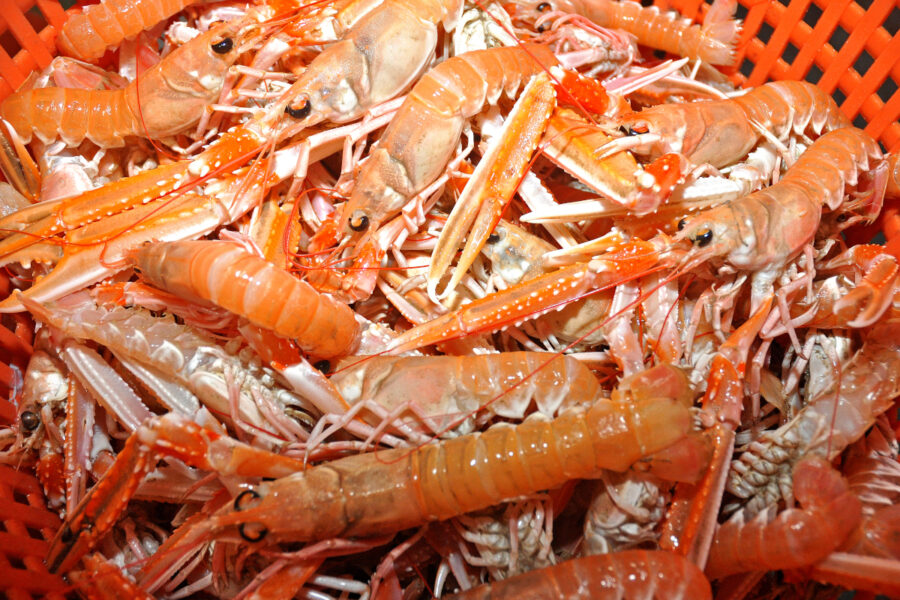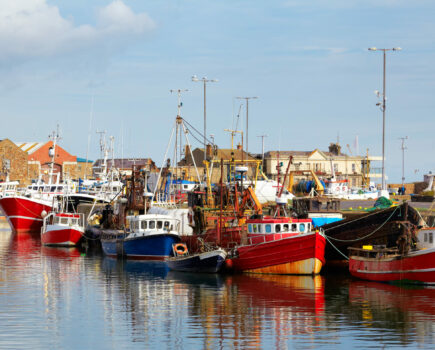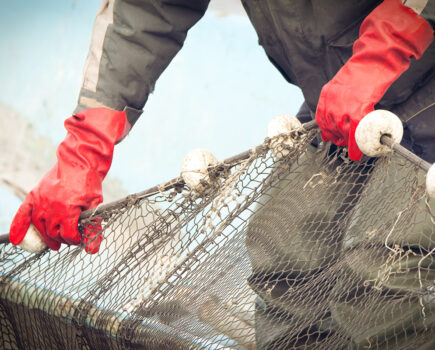Win-win for Scots prawn creel and trawl fleets
Gains for both if access redistributed, says new research
A new report from Marine Scotland on the Scottish Nephrops (prawn) fishery says there could be economic gains for the Nephrops fleet if access to fishing grounds was redistributed between, and within, the creel and trawl fleets, reports Tim Oliver
Research shows that there is scope to increase gross value added by £14m, by redistributing access to fishing grounds so as to maximise gross value added. This is equivalent to a 39% increase in total gross value added for the Nephrops fleet.
Of the £14m in additional gross value added, £10m would accrue to the creel fleet and £3m to the trawl fleet. “The research shows that overall, both fleets can gain from reallocating access to prawn fishing to maximise gross value added,” says the report.
The report is based on new research to guide discussions in Scotland on its continuing Future of Fisheries Management programme.
There has been conflict in Scotland for many years between mobile and static-gear prawn fisheries, particularly on the west coast, including a call for a return of a three-mile limit where all mobile gear fishing is banned.
Marine Scotland says that a number of factors need to be taken into account in assessing what, if any, changes should be made to achieve the optimum outcome for the Scottish prawn fleet.
Firstly, the results from the research do not take into account costs to businesses of amending fishing patterns, or the associated management and compliance costs.
The reasons why vessels’ activity in 2017 was not consistent with the optimum, as identified by the research, are likely to be numerous and complex. They could include factors such as weather, other fisheries management restrictions, perceived gear conflict, or other business or personal decisions.
Secondly, it is unclear whether the optimum outcome that the research identified could be achieved in practice. The results are based on theoretical modelling that is subject to interpretation, and may not translate into the best result in practice.
“The Future of Fisheries Management discussions would also have to consider what the future policy objectives would be for the Scottish Nephrops fishery,” said Marine Scotland.
Thirdly, economic considerations are only one basis on which Marine Scotland approaches fisheries management. Other factors to consider would be the environmental impacts of the fishery, impacts across supply chains, social impacts, continued access to markets, including EU exit impacts, and the impact on prices of changes in the quantity of landings. “Further research is required in these areas to build a more complete evidence base,” said Marine Scotland.
For instance, if fishing opportunities were allocated to the most efficient, typically larger, creel vessels, it could be to the detriment of smaller-scale creel vessels that make important contributions to remote communities.
Fourthly, while the research includes around 85% of the Nephrops landings value, the Nephrops fishery does not operate in isolation from other fisheries, and the impact on vessels in other fleet segments must be considered more fully, both in environmental and in business terms. Vessels targeting prawns land other species, and prawns may be a by-catch of vessels targeting other species.
Impacts on other marine users, including recreational fishers and offshore wind, are also not considered in this report, and would be important factors in any consideration of how best to use Scotland’s marine space.
However, Marine Scotland said that despite these points, the research does indicate potential opportunities to improve economic outcomes in the fishery. It will explore these opportunities as part of the Future of Fisheries Management programme.
Marine Scotland is already involved in a number of projects that look to build on several of the evidence gaps identified by the research, such as the Scottish Inshore Fisheries Integrated Data System (SIFIDS) project.
Marine Scotland Science is undertaking an evidence review in relation to the impact of different gears on stocks and the environment.
Marine Scotland concludes that the research shows that it is possible to model the optimisation of the Nephrops fishery with the available data – but there are still ‘a number of significant challenges’ in relation to using such modelling that should be borne in mind.
It says it will ‘carefully consider these points and continue to develop the evidence base’, as well as taking onboard feedback from stakeholders – which it welcomes.
The issue of competition between vessels operating creel and trawl gear, including competition for access to fishing grounds, has been documented in two reports that were published by the Scottish Creel Fishermen’s Federation (SCFF) in May 2017 and by the Scottish Fishermen’s Federation (SFF) in October 2017. Following these reports, Marine Scotland invested in developing the evidence base further.
The SCFF said it would consider the report carefully and would be discussing it with Marine Scotland. The SFF did not respond to requests for comment.
The report, ‘Optimisation modelling in the Nephrops fleet: policy brief’ can be read at: bit.ly/394eiaK








